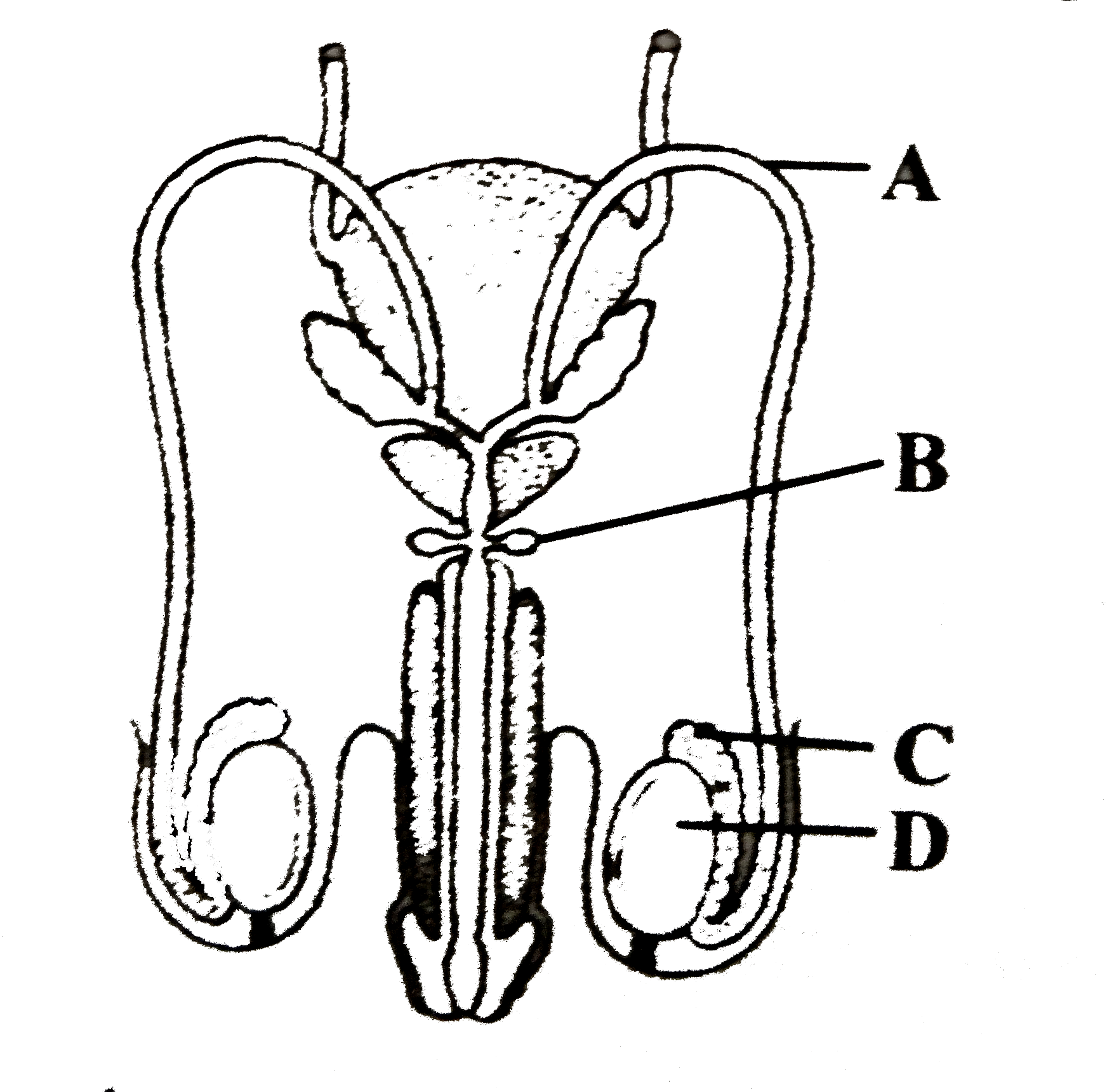The sperm and the egg make different contributions to zygote which of the following statements about their contributions are true?
(i). Sperm contributes most of the mitochondria.
(ii). Egg contributes most of the cytoplasm.
(iii). Both sperm and egg contribute halpoid nucleus.
(iv). Both sperm and egg contribute centrioles.
(i) and (ii)
(ii) and (iii)
(iii) and (iv)
(i),(ii),(iii) and (iv)
The correct Answer is:B
To determine which statements about the contributions of sperm and egg to the zygote are true, let's analyze each statement step by step.
1. Statement (i): Sperm contributes most of the mitochondria.
- The sperm does contain mitochondria in its middle piece, which provides energy for its motility. However, during fertilization, only the sperm head enters the egg, and the mitochondria from the sperm do not contribute to the zygote. Therefore, this statement is false.
2. Statement (ii): Egg contributes most of the cytoplasm.
- The egg (ovum) is significantly larger than the sperm and contains a substantial amount of cytoplasm. This cytoplasm is crucial for the initial stages of development after fertilization. Thus, this statement is true.
3. Statement (iii): Both sperm and egg contribute haploid nucleus.
- Both the sperm and the egg are gametes, and they each contain a haploid nucleus (23 chromosomes in humans). When they fuse during fertilization, they form a diploid zygote (46 chromosomes). Therefore, this statement is true.
4. Statement (iv): Both sperm and egg contribute centrioles.
- The sperm contributes centrioles, which are important for cell division, but the egg does not contribute centrioles. The egg typically lacks centrioles and relies on the sperm for this function. Hence, this statement is false.
Summary of True Statements:
- The true statements are:
- (ii) Egg contributes most of the cytoplasm.
- (iii) Both sperm and egg contribute haploid nucleus.
Final Answer:
The true statements about the contributions of sperm and egg to the zygote are (ii) and (iii).
---
- The sperm does contain mitochondria in its middle piece, which provides energy for its motility. However, during fertilization, only the sperm head enters the egg, and the mitochondria from the sperm do not contribute to the zygote. Therefore, this statement is false.
- The egg (ovum) is significantly larger than the sperm and contains a substantial amount of cytoplasm. This cytoplasm is crucial for the initial stages of development after fertilization. Thus, this statement is true.
- Both the sperm and the egg are gametes, and they each contain a haploid nucleus (23 chromosomes in humans). When they fuse during fertilization, they form a diploid zygote (46 chromosomes). Therefore, this statement is true.
- The sperm contributes centrioles, which are important for cell division, but the egg does not contribute centrioles. The egg typically lacks centrioles and relies on the sperm for this function. Hence, this statement is false.
- The true statements are:
- (ii) Egg contributes most of the cytoplasm.
- (iii) Both sperm and egg contribute haploid nucleus.
The true statements about the contributions of sperm and egg to the zygote are (ii) and (iii).
Similar Questions
Knowledge Check
- Question 1 - Select One
Which of the following structures contribute most to the tensile strength of loose connective tissues?
AElastic fibresBMyofibrilsCCollagen fibresDChondrin - Question 2 - Select One
Be and Al exhibit diagonal relationship. Which of the following statements about them is/are not true?
(i) both react with HCl to liberate H2.
(ii) Theey are made passive by HNO3.
(iii) Their carbides give acetylene on treatment with water.
(iv) Their oxides are amphoteric.A(iii) and (iv)B(i) and (iii)C(i) onlyD(iii) only - Question 3 - Select One
Read the following statements about the given diagram carefully and state which of them are correct ?

(i) A carries urine and sperms.
(ii) B secretes a fluid that helps in the lubrication of penis.
(iii) D produces testosterone but not sperms
(iv) C stroes sperms.A(i) and (ii)B(ii) and (iii)C(ii) and (iv)D(i) and (iv)
Give one significant contribution of each of the following scientists :
(i) Chargaff
(ii) Francis Crick
(iii) Baltimore
(iv) Watson and CrickView SolutionGive one significant contribution of each of the following scientists
(i) Gregor Mendel (ii) Hargobind Khurana (iii) Kary mullis (iv) Hrshey & ChaseView SolutionWhich of the following structures in sperm helps in the first cleavage of a fertillised egg?
View SolutionGive one significant contribution of each of the following scientists:
(i) Alec Jeffrey (ii) Har Gobind Khurana (iii) George Gamow (iv) Francis CrickView SolutionIn which of the following assisted reproductive technology , sperm is inserted into the egg with the help of microscopic needle ?
View Solution

